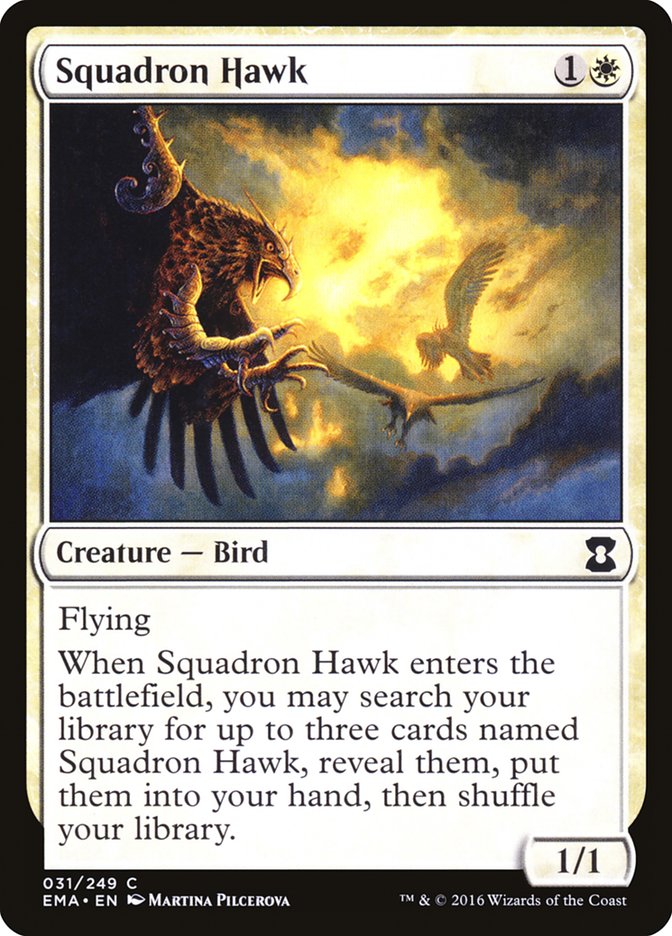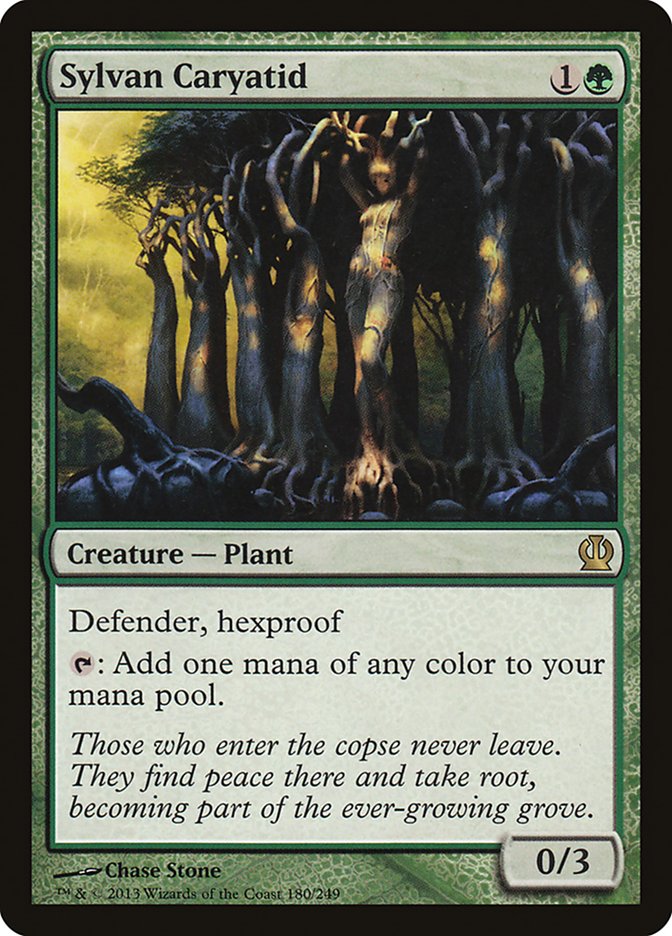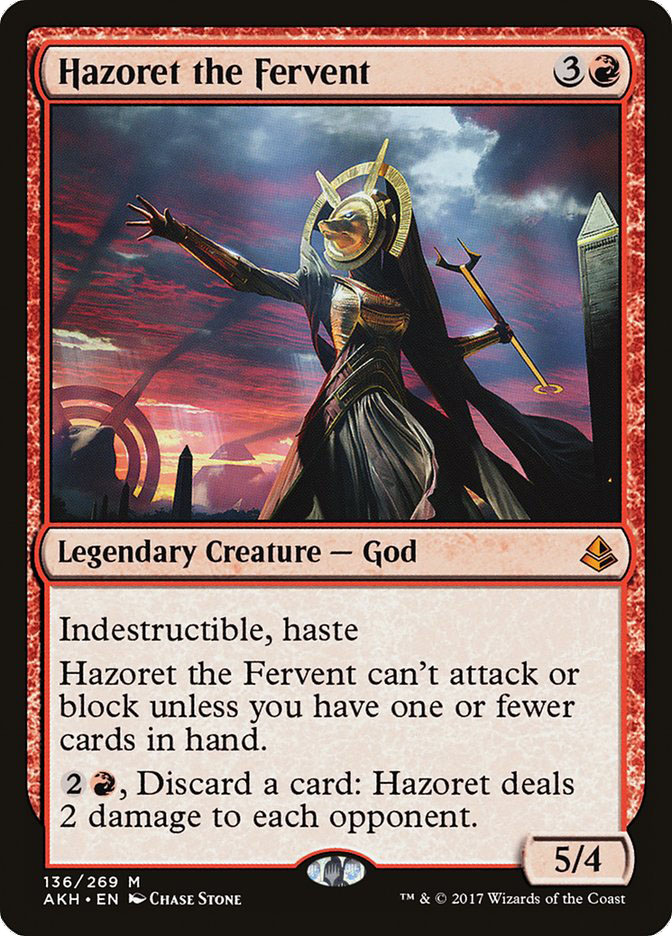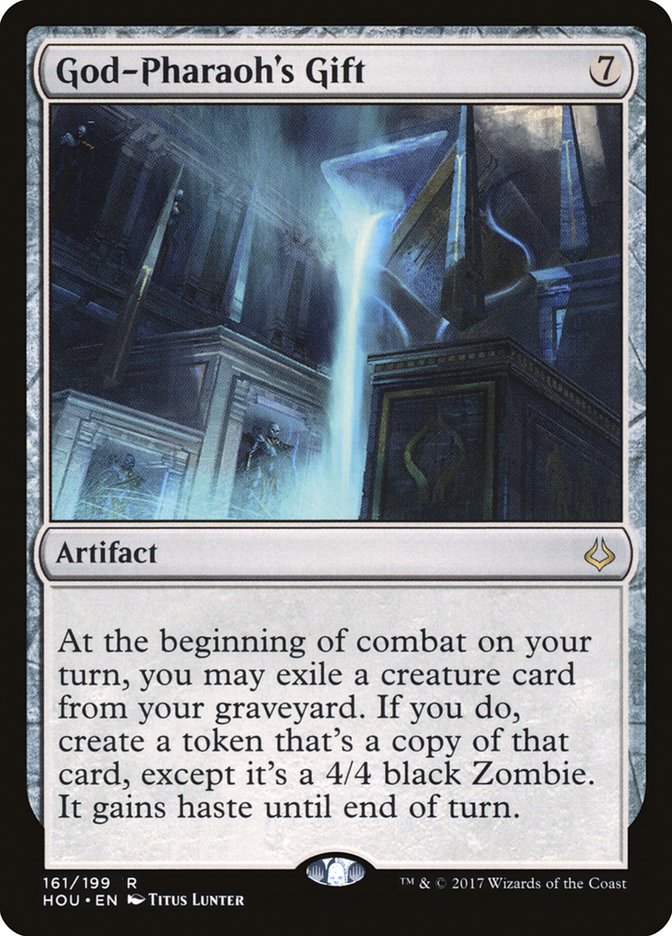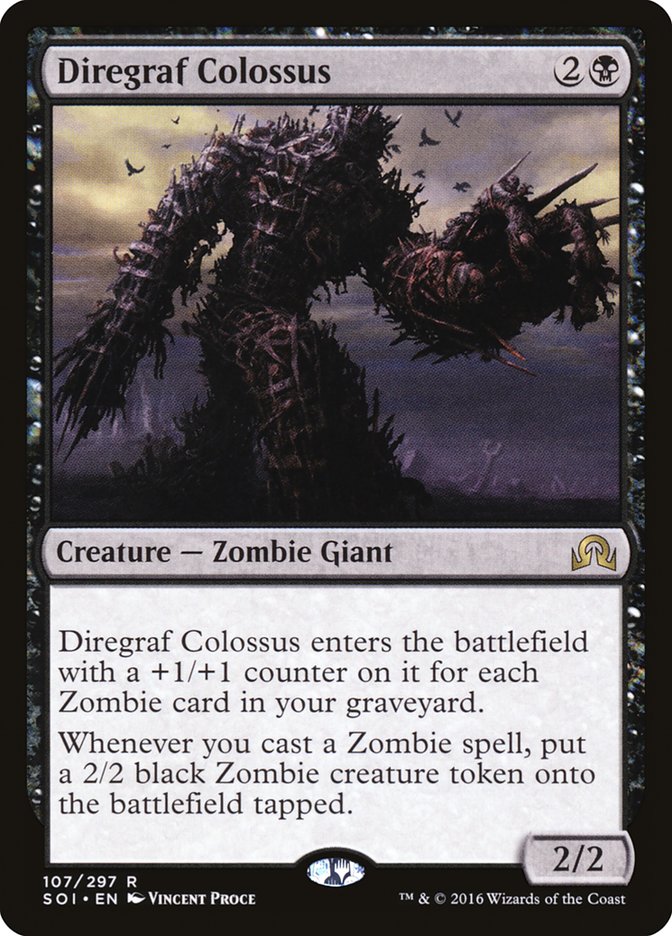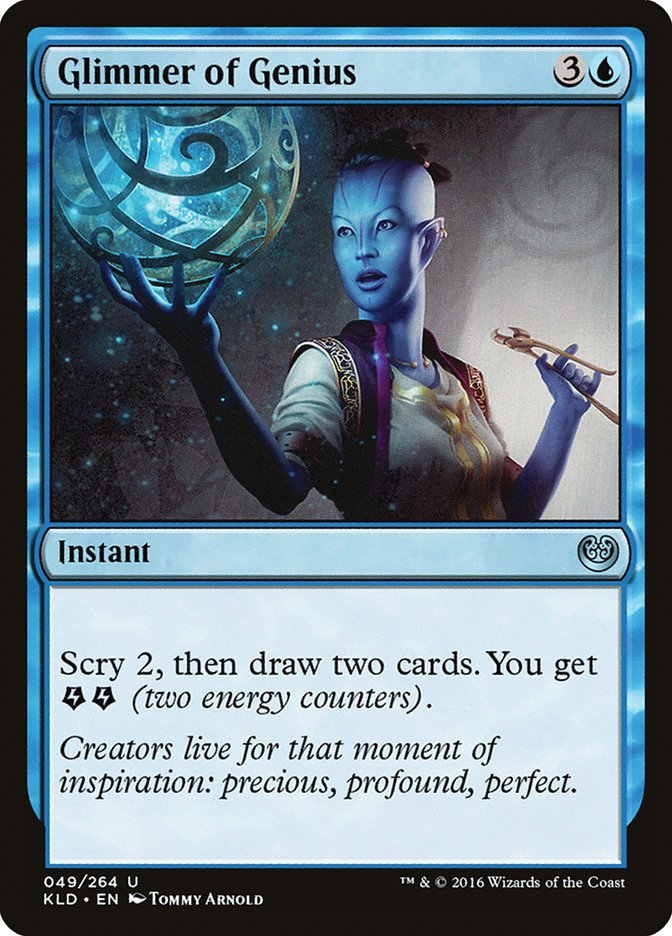It’s taken a long time and a lot of bannings to get here, but I think most players agree that Standard is in a fantastic place right now. Today, I want to look at what makes Standard great: how it’s measured in general, how that applies to the current Standard, and what that means about what we have to look forward to after rotation.
Deck Diversity
There’s a general understanding that, to some extent, the health of a format can be measured by the diversity of decks that do well in that format. There’s some room for debate here. Almost everyone agrees that a format where only one or two decks do well is bad (though, if the mirror is seen as sufficiently interesting and skill-testing, there are players who like those formats), but I think some players are happy when there are three to six decks that are far ahead of the field, and some want an even more open metagame, where you wouldn’t be surprised to play against any of ten or so different decks in any given match.
Personally, I err toward thinking a format with more decks is better than a format with fewer decks as long as the games aren’t worse; that is to say, if someone found a new competitive deck that 7% of people started playing in Standard instead of whatever they were playing, but it didn’t push any other particular decks out of the format and it won a similar amount and played similar games, that would probably make the format better.
If all of that were true, except that it was a combo deck that won 50% of its matches on the third turn and died to itself the other half the time, such that games against it were never interesting, its addition would make the format worse. “Interesting games” is a different metric, though; for me, as far as deck diversity in and of itself, more is better for the health of a format.
There is an argument against deck diversity, which is that a more diverse metagame is harder to prepare for. If there are ten different decks, you might feel like you have to choose a deck that almost never beats one or two of them; you know about those decks and you’d like to be able to beat them, but the best deck you can find just can’t do it. As a result, when you enter a tournament, you feel like you’re playing a pairings lottery, which makes it feel like your victory or defeat doesn’t come from making good choices but from getting lucky in your pairings.
You can choose this deck because it has the best expectation against the field and play your best, but you just can’t prepare for everything in a diverse field. If there are only four decks, you might not be able to reliably beat all of them (if you could, the metagame would probably collapse), but you can at least manage to choose a deck that has a legitimate plan that gives you a fighting chance against each of them.
Personally, I think it’s okay to sometimes lose a terrible matchup. Magic isn’t supposed to be a game where the better player wins 100% of the time, and in most cases, if you lose a match, you can just move on with your life and play another match. The advantage gained in exchange is that the format has more replayability because there’s more variation in your games when you play against more different decks. You get a wider range of experience, more different things to think about, and you’re more likely to encounter something new and unexpected, which I think is a fun experience.
Strategic Diversity
Sometimes, the mana fixing for aggressive decks is too good, or one-drops are too good in several different colors, or there’s not enough lifegain, not good enough sweepers, not enough cheap removal, or whatever else, and you have a format where aggressive decks are best. There may be a wide range of aggressive decks that people can play, but the tools don’t exist for playing a control deck. Similarly, when Sylvan Caryatid and Courser of Kruphix were in Standard, they were simply too good against aggressive strategies, so aggressive creature decks basically didn’t exist.
A wide range of other decks existed, but those didn’t. Simply the number of different decks that exists doesn’t tell you everything you need to know about how diverse a format really is. It’s also important that decks play out differently from each other.
Again, there’s some debate here: is a format better if a non-interactive combo deck exists, or if it doesn’t? For me, it depends on just how non-interactive. If removal is bad against it but there are other tools that are effective, it’s probably fine. If it also has countermeasures to some of those other tools such that it isn’t just a question of whether the opponent bothered to build a sideboard to beat you but that the play of sideboard games is actually interesting, even better.
In general, we expect a good format to have aggressive decks, midrange decks, control decks, possibly combo decks, and ideally a few hard-to-classify, exotic format-specific decks; Metalwork Colossus, for example, might not fall into any of those categories (it’s probably best described as a proactive linear deck). Some players gravitate strongly toward certain macro archetypes and have a lot more fun when they can play that kind of deck, and again, diversity of experience is also best served when matches play out more differently from each other, and when different macro archetypes exist, more different things are likely to matter in games.
Gameplay
Players want to play fun games. Figuring out what this means is a little trickier. In general, I think there are two main things players are looking for in a fun game: they want to feel like their decisions matter and that they’re presented with interesting, close decisions throughout their games, and they want some amount of tension in the game. In other words, they don’t want it to be clear who’s going to win from the beginning, and there should be at least some key turns or inflection points where you think you’ll win unless your opponent has the right card in the right spot or something, and it’s even better if having the right card only catches them up, such that you’re still not sure who’s winning throughout as much of the game as possible.
In a lot of ways, it’s hard to build a format where these things don’t happen, which is why Magic’s fun. You have a lot of options, and the correct play is often hard to identify for sure, and there’s enough variance built into the game that it’s hard to know that you’ll still win if your opponent draws better than you for three turns in a row, but having cards that can be used in a lot of different ways, for example, can help with the first, and having situationally powerful effects can help with the second.
Cards like Emrakul, the Promised End and Aetherworks Marvel were problematic because they invalidated too many decisions; small things that happened before them felt meaningless because they could turn the game around from any position. Hazoret the Fervent functions similarly in the Ramunap Red mirror; it often doesn’t matter how far ahead or how many cards the other player has, or what small advantages they gained through good draws or good decisions earlier, because if only one player can attack with Hazoret, they’ll usually win.
As mentioned above, swingy cards are good because they keep the game tense, but they’re bad if they’re too swingy and invalidate the rest of the game. This is a balance design needs to strike. God-Pharaoh’s Gift is a very swingy card, but it’s easier to interact with via artifact removal or exiling graveyards. I think it’s best when this kind of counterplay exists.
Dynamic
As satisfying as it might feel to imagine a Nash equilibrium where all the decks are perfectly balanced and no one has a reason to change anything from week to week, because that would seem like the ultimate triumph of Magic design and development in some ways, in practice, I think it’s most fun if the metagame evolves and we see new decks emerge and decks rise and fall in positioning. It allows players to get an edge by following and understanding trends and how to exploit certain decks, and it means that for players who always want to play the same thing, sometimes it might just be their week. Besides, it’s fun to learn a new deck, and if you never have an incentive to change, the incentive to know your deck as well as possible would mean you’d be best served by just playing the same thing all the time, which doesn’t sound ideal to me.
Given that, how does the current Standard stack up?
Creatures (24)
- 4 Longtusk Cub
- 4 Bristling Hydra
- 4 Whirler Virtuoso
- 4 Servant of the Conduit
- 4 Rogue Refiner
- 3 Glorybringer
- 1 Rhonas the Indomitable
Lands (22)
Spells (14)

Diversity-wise, according to mtgtop8.com’s metagame breakdown, we have a pretty good mix. In the last two weeks, Temur has been 20% of the field, which is a lot, but on the low end for a “best deck” historically speaking, and that’s a recent rise from less prominence previously. Eight different decks make up a least five percent of the field each, which is honestly not that useful of a data point; after all, if there are more than 20 decks, as there are in Modern, and they all have similar representation, none of them will be over five percent. To me, it feels like we’re in a pretty good place.
Strategic diversity? Here, I think we’re doing great. Red is very low-to-the-ground aggro, and while it can shift into a deck with a long game, no one would mistake it for a midrange deck.
Zombies, Temur, Mardu, and G/B are a half-step more controlling. They’re all clearly aggressive, but they have midrange elements like card advantage, dedicated removal, and planeswalkers.
There are multiple control decks: U/W Approach, U/R Control, and even B/R control, which is on the controlling side of midrange, an attrition deck rather than a hard control/counterspell deck.
There’s also ramp, and a decent mix of proactive linear strategies and fringe decks that attack from different angles. God-Pharaoh’s Gift approaches the combo space, as do fringe decks like New Perspectives and Paradoxical Outcome, which are more theoretically possible in the format than successful parts of the metagame, as they probably should be. There’s also Emerge, some Eldrazi strategies, and other fringe decks like Monument. In general, you can safely expect the quality of different cards in your deck to change considerably depending on what it turns out your opponent is doing and for different hands and strategies to line up strategically better or worse in interesting ways.
As for gameplay, this gets more subjective, but I think we’re in a good place. I rarely hear people complaining about their opponent having a “nut draw” that they couldn’t beat. Maybe one metric for evaluating this is the fewer bad beat stories you hear between rounds, the better, in some ways: fewer people complaining about their opponent casting Ulamog on turn 4, and more people just losing normal, interactive games of Magic. Obviously, you want some key, memorable moments, so this metric isn’t perfect. Maybe what you really want is a diversity of bad beats, rather than just complaining about each opponent doing the same thing.
Objectively, Brad Nelson and Corey Baumeister’s success point to the format being in a place that’s skill-testing, where decisions in games definitely matter. They aren’t playing new, broken decks; they just tune known archetypes for the week and play them well, and they get results.
As to the format being dynamic? Early hype before the Pro Tour surrounded the MTGO PTQ win with U/W God-Pharaoh’s Gift, a deck which has itself morphed into a U/R deck, and which overtook early standout U/W Monument, almost entirely replacing the metagame share of that deck. The PT was essentially dominated by Ramunap Red, which was followed by an MTGO PTQ dominated by Zombies, and then a GP where the most success was with midrange decks like B/G and Mardu, followed by the current rise of Temur Energy. This is a format where a deck can’t even stay on top for a week.
I’d say there’s some solid data to support by initial claim that Standard’s in a good place right now, but what about after rotation? Clearly, we can’t know what the next set will bring; it seems to have substantial tribal elements, which may change the value of existing cards, which is nice, but it’s very hard to know what decks it will create. What we can look at is which existing cores will remain intact.
Temur Energy is almost entirely untouched, so that has a great chance of being an early deck to beat while people figure out how to use the new cards.
Creatures (22)
- 4 Bomat Courier
- 3 Kari Zev, Skyship Raider
- 3 Hazoret the Fervent
- 4 Ahn-Crop Crasher
- 4 Soul-Scar Mage
- 4 Earthshaker Khenra
Planeswalkers (2)
Lands (24)
Spells (12)

Red aggro is better off than you might think. It loses Incendiary Flow and Falkenwrath Gorger, but Village Messenger was already often replaced by Soul-Scar Mage, and Collective Defiance leaves, but a lot of the purpose of that card was to answer Kalitas, Traitor of Ghet, which also rotates out.
Zombies loses Cryptbreaker, Dark Salvation, and Diregraf Colossus, which means that if a Zombie deck exists, it will be completely unrecognizable.
Creatures (21)
- 4 Catacomb Sifter
- 4 Sylvan Advocate
- 3 Verdurous Gearhulk
- 4 Winding Constrictor
- 2 Rishkar, Peema Renegade
- 4 Walking Ballista
Planeswalkers (3)
Lands (24)
Spells (12)

B/G loses a lot of cards that are sometimes played, like Grim Flayer; Sylvan Advocate; Catacomb Sifter; Nissa, Voice of Zendikar; Liliana, the Last Hope; and, critically, Grasp of Darkness. If it continues to exist, it will almost certainly be as a Winding Constrictor / Energy deck.
Creatures (19)
- 2 Archangel Avacyn
- 4 Thraben Inspector
- 2 Pia Nalaar
- 4 Scrapheap Scrounger
- 4 Toolcraft Exemplar
- 3 Walking Ballista
Planeswalkers (2)
Lands (25)
Spells (14)

Mardu keeps its Vehicles and manabase, but loses Thraben Inspector and Gideon, Ally of Zendikar. It’s possible that Scrapheap Scrounger, Toolcraft Exemplar, and Unlicensed Disintegration are powerful enough draws that people will find a way to make them work together, since the manabase stays intact, but Thraben Inspector is an oddly tough act to follow.
God-Pharaoh’s Gift keeps Champion of Wits, Minister of Inquiries, and Angel of Invention, along with its artifacts, which I think is a strong enough core that the strategy should morph into something competitive.
Emerge no longer exists, neither does any Eldrazi strategy, and there’s no real payoff for ramping, so that presumably stops being a deck.
U/R Control continues to have cheap removal, Glimmer of Genius, and Torrential Gearhulk. It actually loses very little of consequence beyond Wandering Fumarole.
U/W Approach uses very similar cards, and should also be fine after rotation.
R/B Control loses most of its creatures and Liliana, the Last Hope, and would not be recognizable if something similar existed later.
So we primarily lose graveyard strategies, Ramp, the Delirium side of B/G, Zombies, and a few specific important cards like Tireless Tracker, Grasp of Darkness, and Gideon, Ally of Zendikar. Really, we lost most planeswalkers that people play aside from Chandra, Torch of Defiance.
Despite that, we still have great shells for control, aggro, midrange, and linear/combo decks, so I’m optimistic about the future of Standard.



